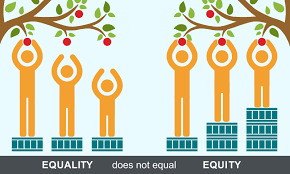
Toward health equity: cultural safety
Counteract racism: Practicing in a culturally safe way
From Module 4 Equip Health Care
1. What is cultural safety?
Sometimes we like to think that racism is not a big problem in Canada. Unfortunately, racism still exists on individual and systemic levels, causing unnecessary harm to people every day.
That includes within social service and health care environments like child welfare agencies, clinics, hospitals and other organizations serving the public. And it can prevent our clients from getting the care they need. Cultural safety can help reduce experiences of racism within health care while promoting better health outcomes.
What is cultural safety?
Cultural safety is an approach to practice based on understanding the impacts of inequitable power relations, racism, discrimination, and historical and current inequities on health and health care.
It shifts the attention away from “cultural differences” as the source of the problem to the culture of health care as the site where health providers can take action to create safety for all.
It moves beyond cultural sensitivity to place responsibility on care providers to create culturally safe environments.
It foregrounds social justice goals as essential to health care, with the aim of shaping health care practices, policies and organizations. For example, intake forms, visiting policies and even the physical layout can make people feel more or less welcome and respected. Think about entering a clinic with bars in front of the reception staff versus a low desk with plants!
It takes into account the inherent power imbalance between you as a health care provider and the person coming to you for care.
Culturally safe care is particularly important for Indigenous peoples in Canada given the history and ongoing effects of racism and colonization. This systemic discrimination exists as much within our health care systems as it does within Canadian society more broadly.
While what “counts” as culturally safe care is decided by the client or patient, there are strategies you can implement to shift your practice to provide your clients with top quality, culturally safe care and support them towards better health outcomes.
Why focus on providing culturally safe care to Indigenous people?
Indigenous people in Canada have experienced the most profound impacts of colonization, including deliberate destruction of Indigenous cultures and languages, removal from their lands, and apprehension of Indigenous children by the state. Canadian society has a long way to go to try to repair these wrongs. The following tool unpacks this idea in more detail.
Learn more about Indigenous cultural safety
Two excellent resources for health and social service providers who:
- want to learn more about Cultural Safety is the San’yas Indigenous Cultural Safety Training provided by BC’s Provincial Health Services Authority. In Ontario, San’yas has created training specific to the province. Visit San’yas to learn more or register.
- want to experience a dynamic teaching tool that shares the historic and contemporary relationship between Indigenous and non-Indigenous peoples in Canada. See:.Kairos Blanket Exercise



